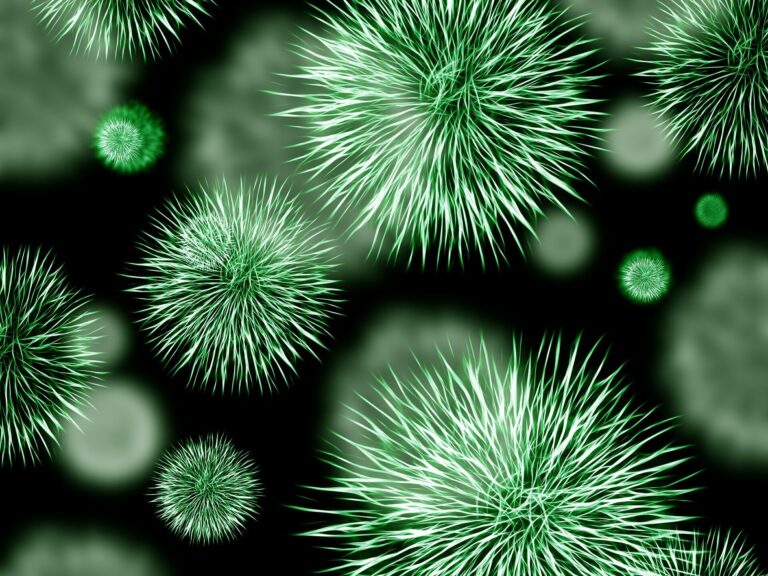Credit: Pixabay/CC0 Public Domain
The novel coronavirus disease (COVID-19) pandemic has made it important to predict the invasion of new pathogens into humans and their evolutionary potential to generate new variants in order to prevent future outbreaks. It showed that there is. A new study conducted at Princeton University and the University of Chicago published in the journal Science presents a unifying theory for predicting such invasions and their impact on competing pathogens.
“Many different pathogens infect the human population, so explaining differences in the circulation patterns of strains is a major challenge,” said first author Sang Woo Park, a recent Ph.D. . from Princeton University's Department of Ecology and Evolutionary Biology and is a Life Sciences Research Foundation Fellow at the University of Chicago.
“For example, influenza and SARS-CoV-2 exhibit strain replacement, meaning the emergence of a new strain causes the extinction of a previous strain. This adds significant challenges to vaccine development. But this is not necessarily true for other pathogens; for example, there are two strains of RSV, a common respiratory pathogen that causes colds, especially among children.
“Other researchers have provided important insights into understanding pathogen competition between influenza, SARS-CoV-2, and RSV,” Park said. “Instead, we wanted to develop a single unifying theory that could explain why we see strain replacement in some pathogens but not in others.”
“Developing a unified theory is important because it allows us to compare different pathogens and identify the mechanisms that cause differences in strain circulation patterns among them,” said co-author Professor of Ecology and Evolutionary Biology at Princeton University School of Public said Problem Professor C. Jessica Metcalfe. Affiliated faculty at Princeton's High Meadows Environmental Institute.
In this paper, the authors extend classical theory from community ecology to predict the outcome of species competition. They showed that the same idea can be applied to compare competing pathogen strains and predict whether a new strain will displace a competitor.
“From an ecological perspective, the ability of one strain to spread within a population that already contains another strain is an important predictor of strain co-circulation,” said co-author Jonathan, a professor of environmental studies at Princeton University.・Mr. Levin stated. in Biology and is an affiliated faculty member at the High Meadows Environmental Institute.
“What is surprising is that our model predicts that most competing strains can spread across common human pathogens, including influenza and SARS-CoV-2, in the presence of competing strains. '' said Brian Grenfell, senior author of the paper and assistant secretary of state. At Princeton University, Kathryn Breiger and Sarah Fenton are professors of ecology, evolutionary biology, and public affairs, and affiliated faculty at the High Meadows Institute for the Environment.
“This result initially appeared to contradict observations of strain substitution in influenza and SARS-CoV-2. Rather, this study suggests that there is an additional layer of complexity in predicting strain co-circulation. has been revealed.”
This study further found that strain coexistence requires both competing strains to persist in the population after the initial invasion. The authors then showed that population-level immunity can predict whether new and old strains will remain in a population and eventually coexist.
“When a new strain enters the population for the first time, many people become infected and develop immunity,” Park said. “This build-up of immunity prevents this strain from re-entering the population until there are a sufficient number of susceptible individuals in the population, either by birth or weakened immunity.”
“How quickly the susceptible population increases after an outbreak is a key factor in determining the likelihood of subsequent outbreaks and, in turn, the ability of strains to co-circulate,” said co-author Sarah Corby, a professor of ecology at the University of California. (Professor of the Department of Evolution) said. University of Chicago.
“Overall, this study suggests that there is a great diversity of pathogens that can enter the population,” Professor Park added. “This study highlights the importance of understanding the interactions between different pathogens to predict and prevent future epidemics.”
Mike Boots, the Trevor J. “This will help us understand the mechanisms that determine the invasion of these species.”
Further information: Sang Woo Park et al., Prediction of pathogen interinvasiveness and cocirculation, Science (2024). DOI: 10.1126/science.adq0072
Provided by Princeton University
Citation: A Unified Theory for Predicting Pathogen Competition: Exploring How Emerging New Strains Displace Previous Strains (October 15, 2024) https://phys.org/news/2024-10- Theory Retrieved October 15, 2024 from -pathogen-competition-exploring-emerging.html
This document is subject to copyright. No part may be reproduced without written permission, except in fair dealing for personal study or research purposes. Content is provided for informational purposes only.

